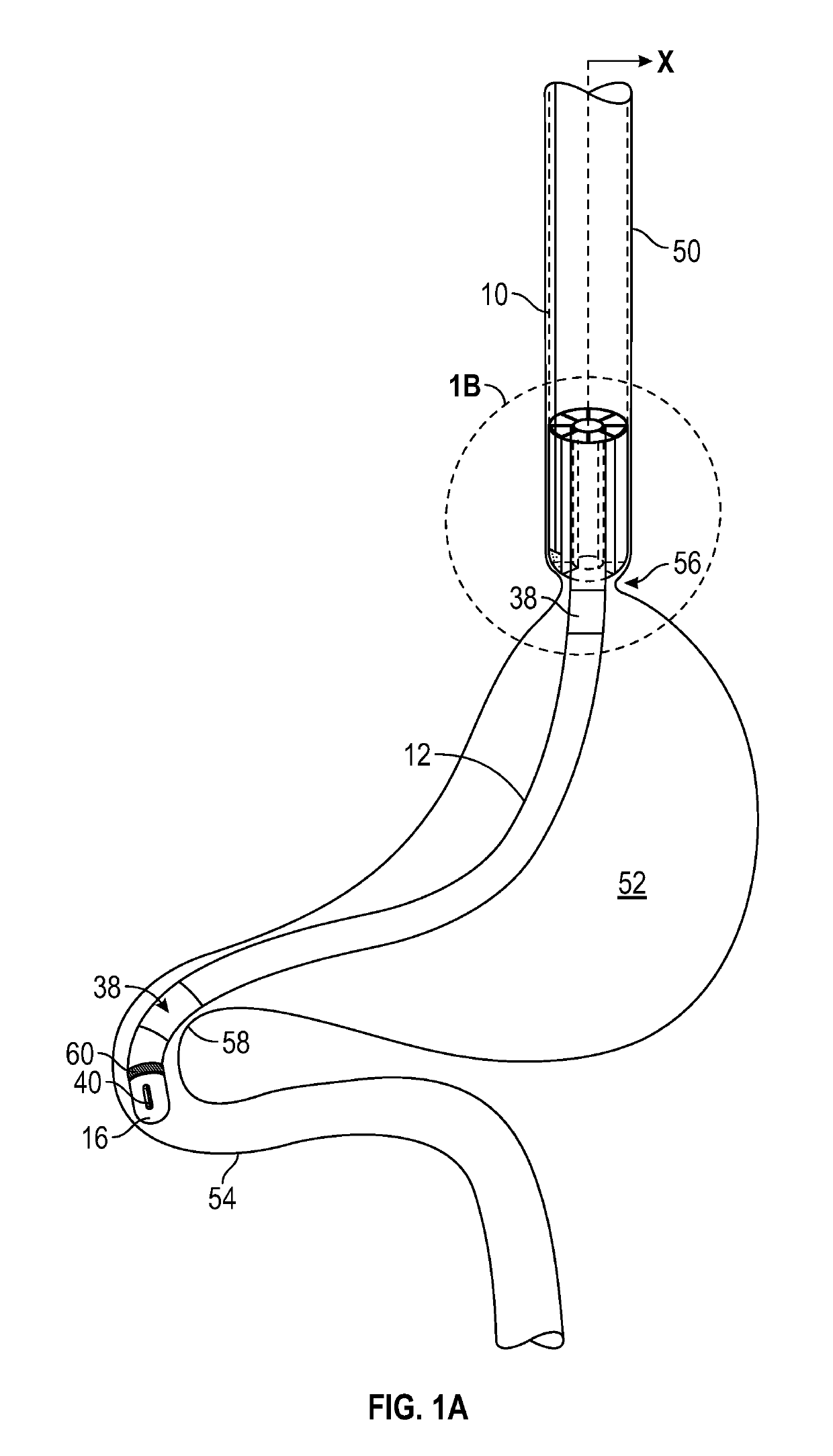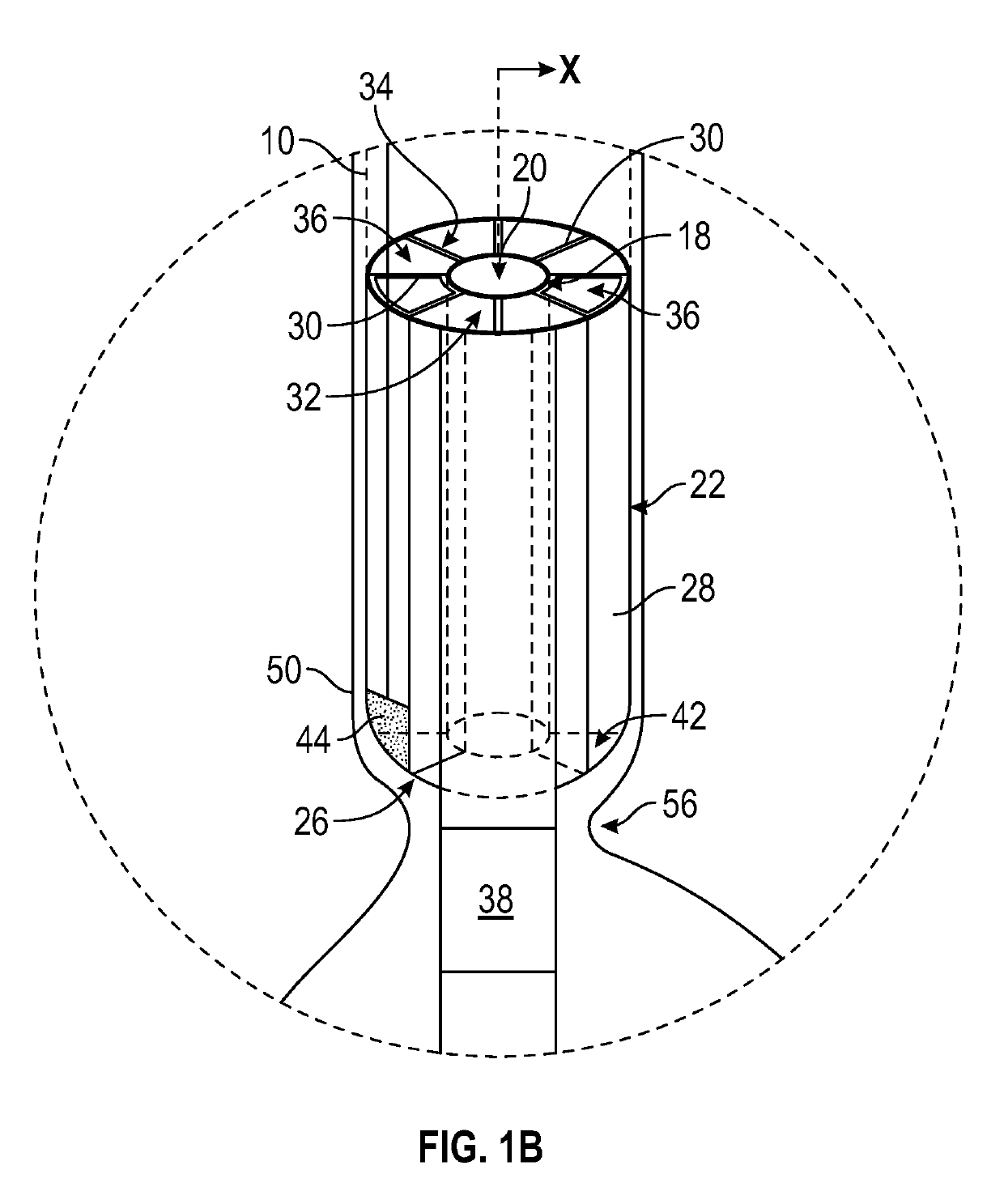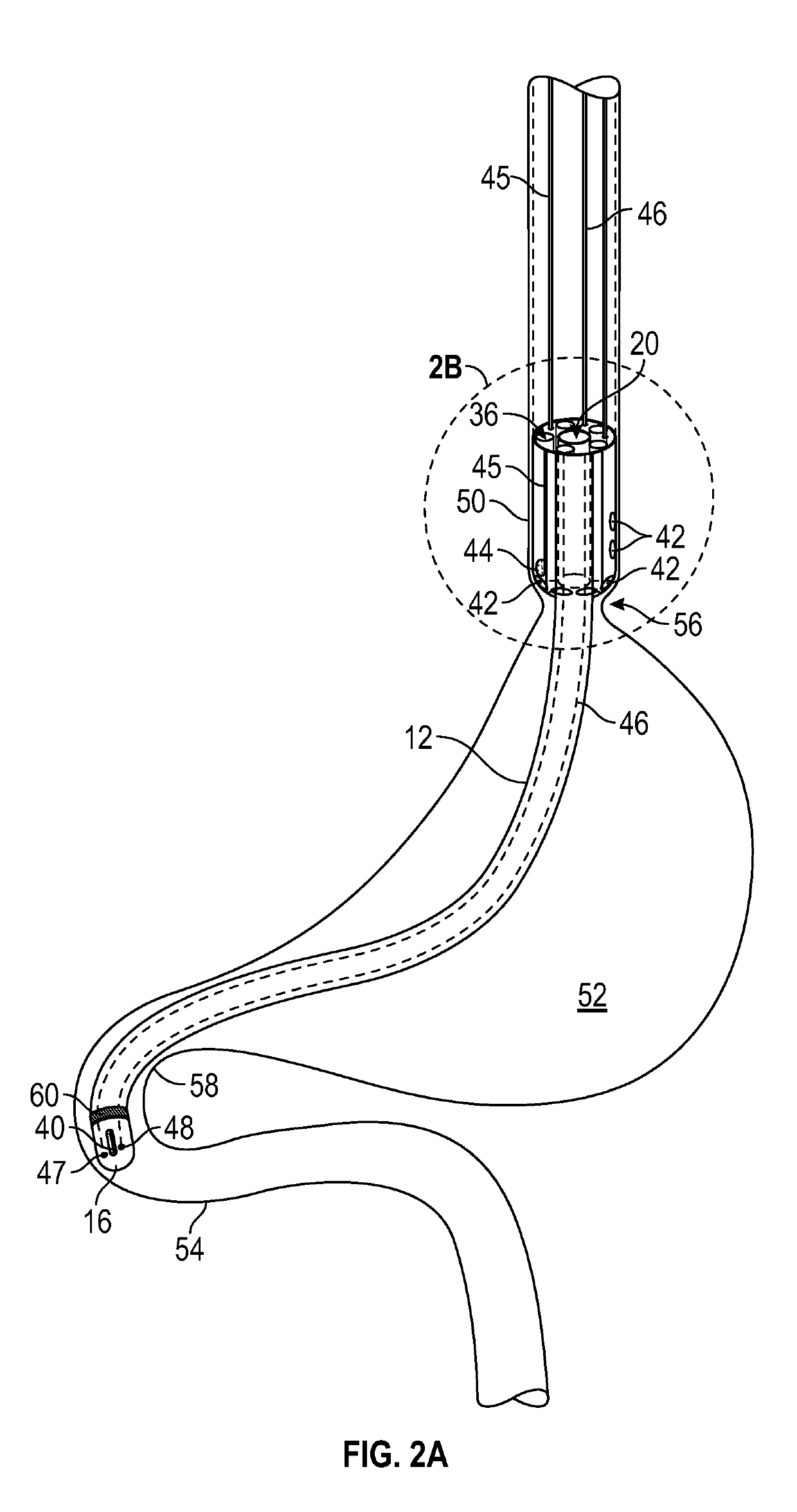Enteral drug delivery system
a technology of drug delivery system and enteral feeding, which is applied in the field of improved enteral feeding catheters, can solve the problems of generating fluid aspiration, slow feeding rate into the small intestine, and high risk of reflux
- Summary
- Abstract
- Description
- Claims
- Application Information
AI Technical Summary
Benefits of technology
Problems solved by technology
Method used
Image
Examples
example 2
[0051]12 male Wistar rats were randomly assigned to two experimental hemorrhagic shock groups: (i) Control: enteral infusion of vehicle (GoLytely); and (ii) Treatment: enteral infusion of a protease inhibitor (Tranexamic Acid, 127 mM) in GoLytely solution (0.068 g / ml GoLytely in sterile water). The infusion line was placed in the duodenum post-pyloric, while the safety lines were placed intragastric or esophageal.
[0052]Hemorrhagic shock was induced by sedation followed by blood withdrawal to a target pressure of about 35 mmHg. The infusion line was inserted at about 10 minutes after completion of hemorrhage and infusion of about 17.5 cc of solution progressed over 2.5 hours. After two hours of ischemia, the removed blood was returned followed by two hours of reperfusion.
[0053]All major endpoints were improved / preserved in shock with the proposed treatment (arterial pressure, lactate, blood gas, etc.) Histology showed improved preservation and integrity of the intestinal barrier morp...
example 3
[0054]The system was subsequently tested in pigs for delivery of a solution into the intestine to simulate rapid infusion treatment of a subject during hemorrhagic shock. The pig experiments were conducted on four separate occasions. In all experiments, female pigs (weighing approximately 40 kg) were anesthetized with propofol or a combination of propofol and midazolam. In some cases, anesthesia was initially induced by intramuscular injection of ketamine. Pigs were usually intubated and mechanically ventilated. The duration of the experiments ranged from about 2.5 hours to 11 hours.
[0055]The solutions administered were Ringer lactate+barium (first experiment); water+GoLytely solution+food coloring (second experiment); water+GoLytely solution+contrast and methylene blue (third experiment); and water+barium (fourth experiment).
[0056]Standard nasogastric tubes (18 Fr or smaller Salem tubes) were used in all pig experiments. There was no problem with the placement of two tubes in the e...
example 4
[0063]It was decided to test the possibility of operating the safety system inside the stomach rather than the esophagus, according to the same principles validated in rats. In this experiment, the “safety line” was connected to an aspiration pump that continuously generated a low level of negative pressure to ensure both that the aspiration of possible backward flow was continuously performed and that there was no risk of suction of the esophageal / gastric walls.
[0064]A comparison of the efficiency of suction in the stomach vs. esophagus was performed in vitro. A simple control system using infusion pumps driven by pressure measurements obtained from a pressure sensor within the stomach was prepared.
PUM
 Login to View More
Login to View More Abstract
Description
Claims
Application Information
 Login to View More
Login to View More - R&D
- Intellectual Property
- Life Sciences
- Materials
- Tech Scout
- Unparalleled Data Quality
- Higher Quality Content
- 60% Fewer Hallucinations
Browse by: Latest US Patents, China's latest patents, Technical Efficacy Thesaurus, Application Domain, Technology Topic, Popular Technical Reports.
© 2025 PatSnap. All rights reserved.Legal|Privacy policy|Modern Slavery Act Transparency Statement|Sitemap|About US| Contact US: help@patsnap.com



